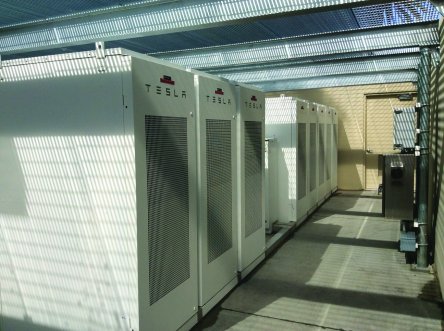Though energy storage is a relatively new addition to the property operations toolkit, it offers vast potential. Battery systems have demonstrated multiple ways to enhance sustainability, cut costs and supply reliability. A key tactic is load shifting, the process of obtaining power during off-peak hours and storing it for use during costlier peak hours, noted Elliotte Quinn, an energy and construction attorney with Charleston, S.C.-based law firm Parker Poe. Batteries offer an alternative backup strategy to diesel generators, and can store solar power for use at night or on overcast days, Quinn noted. Earlier this year, The Irvine Co. launched a multi-property storage strategy at 21 office towers in Orange County, Calif. When requested by local utility Southern California Edison, the buildings switch their power source from the grid to a storage system that’s powered by Tesla batteries (pictured above). The office portfolio becomes a “virtual power plant that can be used to take the load off the grid instantaneously,” explained Susan Kennedy, CEO of San Francisco-based Advanced Microgrid Solutions, the system’s designer and manager. Shifting to battery power reduces the load by 10 megawatts for as long as four hours to help SCE balance the grid. Wholesale Changes An order issued this year by the Federal Energy Regulatory Commission should make it easier for property owners to sell energy into the wholesale market, but there is a hitch. “If you do that, you’re making yourself subject to federal regulation,” said Quinn. Wholesale selling is likely to be the purview of larger owners, he predicted. As is generally the case with newer technology, battery storage remains a work in progress. By most estimates, costs are dropping, yet the difficulty of predicting payback periods presents a challenge for owners that need to make a multimillion-dollar...

